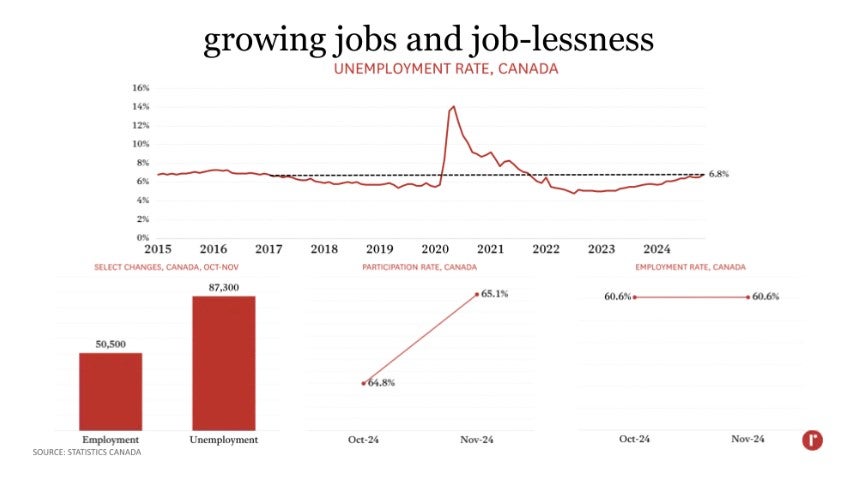
The country’s unemployment rate has been on an upward march since bottoming out in July 2022—at a record-low of 4.8%—increasing to 6.8% last month. This represents the highest level (outside of the pandemic years of 2020 and 2021) since January 2017.

In spite of the rising unemployment rate, we did actually add a significant number of jobs last month—50,500, to be exact. While this is certainly a positive trend, it pales in comparison to the increase in unemployed persons of 87,300. Additionally, the vast majority of the hiring (45,000 jobs) continues to be driven by the public sector.
The reason that both the employment and unemployment counts increased as much as they did last month was due to greater labour force participation, with the participation rate rising from 64.8% in October to 65.1% in November. And while this also is a positive trend, the participation rate is still very low historically, with November’s being the fourth-lowest (again outside of the pandemic years) since June 1998. These all add up to an employment rate (the share of all Canadians aged 15+ who are working) that was unchanged last month, sticking at its lowest level since June 1999.
Overall, the LFS data continue to point to a labour market that is weak, and trending in the wrong direction. The economy continues to be constrained by restrictive interest rates. With inflation right on the Bank of Canada’s 2.0% target, another reduction of the Bank’s policy rate on December 11th is certain. Today’s jobs data increases the likelihood of a 50 basis point cut to 3.25%, which, in our opinion, is the more prudent course of action.


